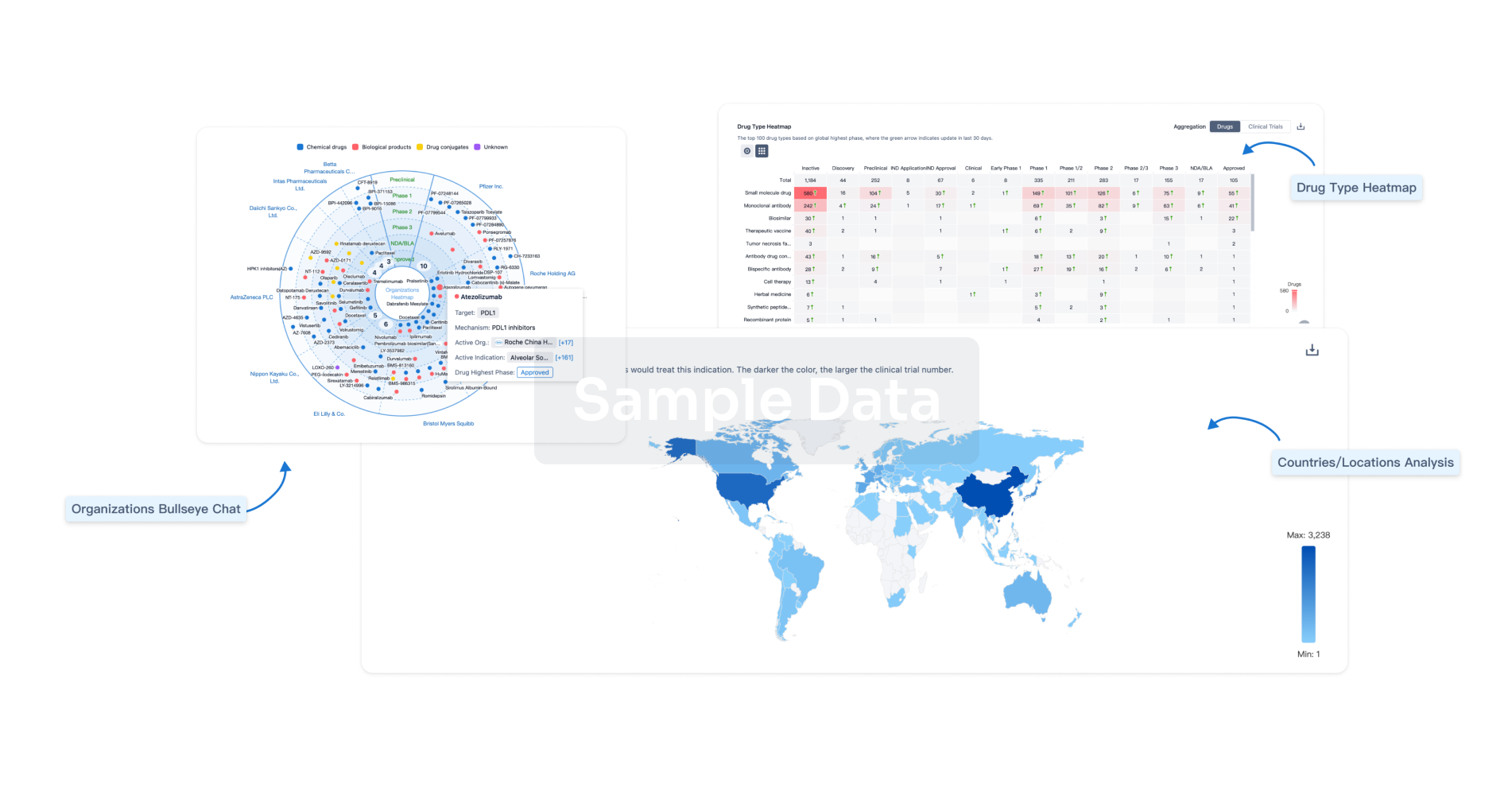Request Demo
Last update 08 May 2025
Leukodystrophy, Demyelinating, Adult-Onset, Autosomal Dominant
Last update 08 May 2025
Basic Info
Synonyms ADLD, Adult-onset autosomal dominant demyelinating leukodystrophy, Adult-onset autosomal dominant leukodystrophy + [6] |
Introduction A rare, slowly progressive neurological disorder involving central nervous system demyelination, leading to autonomic dysfunction, ataxia and mild cognitive impairment. |
Related
1
Drugs associated with Leukodystrophy, Demyelinating, Adult-Onset, Autosomal DominantTarget |
Mechanism LMNB1 modulators |
Active Org. |
Originator Org. |
Active Indication |
Inactive Indication- |
Drug Highest PhasePhase 1/2 |
First Approval Ctry. / Loc.- |
First Approval Date20 Jan 1800 |
4
Clinical Trials associated with Leukodystrophy, Demyelinating, Adult-Onset, Autosomal DominantNCT06816498
An Open-label, Single-center, Single-participant Study of an Experimental Antisense Oligonucleotide Treatment for a Patient with LMNB1 Mutation Associated Autosomal Dominant Leukodystrophy (ADLD)
This research project entails delivery of a personalized antisense oligonucleotide (ASO) drug designed for a single participant with Autosomal Dominant Leukodystrophy (ADLD) due to LMNB1 mutation
Start Date01 Feb 2025 |
Sponsor / Collaborator  n-Lorem Foundation n-Lorem Foundation [+1] |
NCT02699190
LeukoSEQ: Whole Genome Sequencing As a First-Line Diagnostic Tool for Leukodystrophies
Leukodystrophies, and other heritable disorders of the white matter of the brain, were previously resistant to genetic characterization, largely due to the extreme genetic heterogeneity of molecular causes. While recent work has demonstrated that whole genome sequencing (WGS), has the potential to dramatically increase diagnostic efficiency, significant questions remain around the impact on downstream clinical management approaches versus standard diagnostic approaches.
Start Date06 Jan 2017 |
Sponsor / Collaborator |
NCT03047369
The Myelin Disorders Biorepository Project and Global Leukodystrophy Initiative Clinical Trials Network
The Myelin Disorders Biorepository Project (MDBP) seeks to collect and analyze clinical data and biological samples from leukodystrophy patients worldwide to support ongoing and future research projects. The MDBP is one of the world's largest leukodystrophy biorepositories, having enrolled nearly 2,000 affected individuals since it was launched over a decade ago.
Researchers working in the biorepository hope to use these materials to uncover new genetic etiologies for various leukodystrophies, develop biomarkers for use in future clinical trials, and better understand the natural history of these disorders. The knowledge gained from these efforts may help improve the diagnostic tools and treatment options available to patients in the future.
Researchers working in the biorepository hope to use these materials to uncover new genetic etiologies for various leukodystrophies, develop biomarkers for use in future clinical trials, and better understand the natural history of these disorders. The knowledge gained from these efforts may help improve the diagnostic tools and treatment options available to patients in the future.
Start Date08 Dec 2016 |
Sponsor / Collaborator |
100 Clinical Results associated with Leukodystrophy, Demyelinating, Adult-Onset, Autosomal Dominant
Login to view more data
100 Translational Medicine associated with Leukodystrophy, Demyelinating, Adult-Onset, Autosomal Dominant
Login to view more data
0 Patents (Medical) associated with Leukodystrophy, Demyelinating, Adult-Onset, Autosomal Dominant
Login to view more data
283
Literatures (Medical) associated with Leukodystrophy, Demyelinating, Adult-Onset, Autosomal Dominant01 Mar 2025·Journal of Voice
Symptom Expression Across Voiced Speech Sounds in Adductor Laryngeal Dystonia
Article
Author: Doyle, Philip C ; Marks, Katherine L ; Stepp, Cara E ; Frankford, Saul A ; Feaster, Taylor F
01 Mar 2025·Journal of Voice
Study of Glottal Attack Time and Glottal Offset Time in Neurogenic Voice Disorders During Sustained Phonation
Article
Author: Naghibolhosseini, Maryam ; Zayernouri, Mohsen ; Deliyski, Dimitar D ; Henry, Trent M ; Zacharias, Stephanie R C
01 Dec 2024·Neurobiology of Disease
The effect of a dominant kinase-dead Csf1r mutation associated with adult-onset leukoencephalopathy on brain development and neuropathology
Article
Author: Irvine, Katharine M ; Pal, Reiss ; Irvine, Katharine M. ; Summers, Kim M. ; Mabbott, Neil A ; Bradford, Barry M ; Hume, David A ; Woodruff, Trent M. ; Woodruff, Trent M ; Carter-Cusack, Dylan ; Mabbott, Neil A. ; Khan, Nemat ; Pridans, Clare ; Stables, Jennifer ; Summers, Kim M ; Hume, David A. ; Bradford, Barry M. ; Taylor, Isis
Analysis
Perform a panoramic analysis of this field.
login
or

AI Agents Built for Biopharma Breakthroughs
Accelerate discovery. Empower decisions. Transform outcomes.
Get started for free today!
Accelerate Strategic R&D decision making with Synapse, PatSnap’s AI-powered Connected Innovation Intelligence Platform Built for Life Sciences Professionals.
Start your data trial now!
Synapse data is also accessible to external entities via APIs or data packages. Empower better decisions with the latest in pharmaceutical intelligence.
Bio
Bio Sequences Search & Analysis
Sign up for free
Chemical
Chemical Structures Search & Analysis
Sign up for free
